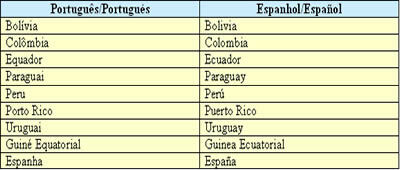O Petroleumis an important fossil fuel and originates from the decomposition of organic matter under specific conditions of pressure and temperature. This energy resource is widely used around the world, including in the production of a series of products, such as plastic. However, oil exploration has caused serious environmental problems, which will be presented throughout this text.
Read too:The relationship between environmental impacts and the emergence of diseases
What is oil?
Oil is a fossil fuel, being formed by a complex combination of Hydrocarbons (chemical compound formed by carbon and hydrogen atoms). Its formation occurs through the accumulation of organic material that was buried and underwent complex modifications over thousands of years. This fossil fuel, which is found in sedimentary basins, is usually associated with water and natural gas.
Want to better understand the composition, use and history of this fossil fuel? Access the text: Petroleum. |
oil pollution

O oil can be released into the environment as a result of a series of events, such as accidents with oil tankers, accidents on oil platforms and the release of water used to wash tanks where oil is stored. When spilled into the environment, oil triggers a series of damages to the ecosystem, causing chemical and physical changes in the environment, in addition, of course, to harming the life existing in that local.
When falling into the marine environment, for example, oil prevents the passage of light. This immediately affects the phytoplankton, photosynthetic organisms and therefore need luminosity. With the reduction of phytoplankton, the zooplankton, which feeds on these organisms, ends up having its food reserve reduced. Thus, oil negatively affects the entire food chain.
Not only is the aquatic environment affected by oil, the mangrove areas they can also suffer from this pollution. In these ecosystems, the oil impregnates the root system of the plants that live there, thus preventing the absorption of nutrients and oxygen. Furthermore, as the region is widely used for the reproduction of some species, these can also be affected. This is the case for a wide variety of species of crabs.
Aquatic animals such as fish and turtles can also die as a result of the oil spill. They can poisoning yourself with oil, dying of suffocation or even getting stuck in oil. Intoxications are responsible for compromising, for example, the nervous system and the excretory system of these animals.
We can't forget the seabirds, which remove their food from these environments. When covered in oil, these birds simply can't fly or swim. Also, the presence of oil in their bodies can trigger a thermal imbalance, killing these animals from cold or heat depending on the climate of the region.
Environmental pollution by oil also harms man, since tourism may decline, and fishing activity will also be affected. Thus, oil pollution causes direct damage to the population of these regions.
Main consequences of oil pollution |
|
Read too: Brazilian environmental problems
Cleaning of areas affected by oil

Cleaning up areas affected by oil is not an easy task. Among the cleaning techniques currently available, we can mention:
Containment barriers: seek to prevent the oil from spreading to more areas.
skimmer: andequipment that ensures the removal of oil from the water by means of a catchment device and a system that ensures the pumping of oil to a storage location. Usually the skimmer is accompanied by the use of the containment barrier.
Chemical dispersants: Chemicals are used for the purpose of removing oil from the surface of the water.
Bioremediation: technique based on the degradation of oil by stimulating the activity of microorganisms capable of metabolizing oil constituents. In some cases, these microorganisms are already present at the site; in others, it is necessary to insert them in the middle.
Manual removal: it is made in coastal environments, using objects such as shovels, cans, wheelbarrows, among others.
Mechanical removal: it is also carried out in coastal environments, and the oil is removed by means of vehicles and machines.
It is worth noting that several other techniques can be adopted to remove oil from the environment. The use of each technique depends on factors such as oil concentration and its characteristics.
By Ma. Vanessa Sardinha dos Santos
Source: Brazil School - https://brasilescola.uol.com.br/geografia/poluicao-por-derramamento-petroleo.htm


